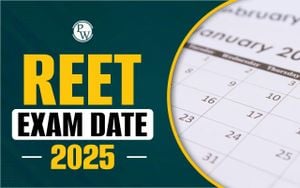The automotive market is undergoing significant transformations as it gears up for 2025, with experts at the XV annual ForAuto 2025 forum held in Moscow highlighting key trends and forecasts affecting the industry. Organized by the analytical agency AVTOSTAT and supported by strategic partner Avito Auto, the forum attracted leading industry experts and stakeholders who discussed the changing dynamics of the Russian automotive market.
One of the primary trends discussed was the shifting consumer segments within the automotive market. Currently, dealer traffic is primarily driven by two customer categories: first-time car buyers and experienced buyers who prioritize comfort and prestige. Nevertheless, experts pointed out the emergence of a fundamentally new segment of consumers, who favor modern communication methods and purchasing approaches over traditional dealer practices.
This new generation of buyers, raised with smartphones, shows clear dissatisfaction with conventional sales methods and tends to avoid face-to-face negotiations at dealers. Instead, they prefer gathering information online, with Avito Auto reporting a 69% communication rate through chats among dealers. Konstantin Bolydurov, the head of business development for B2C lending at Avito Auto, commented on this shift, stating, "Consumer behavior transformation necessitates the development of new business directions focused on remote interaction."
Companies connected to Avito's 'Select' service, which facilitates remote customer interactions, have reportedly seen traffic increase by 14%. The service exemplifies how dealers must adapt to modern customer journeys accommodating both traditional clients willing to interact face-to-face and the newer demographic desiring minimal offline contact when making decisions.
Another highlight from the forum was the rise of first-time buyers, with the number of new car buyers increasing by 8% from the previous year. Notably, 32% of consumers are now considering both new and used vehicles, demonstrating their flexibility in option selection. Shopping aggregation platforms are increasingly utilized for comparing offers, as revealed by surveys indicating 81% of buyers start their search on ad platforms, with 74% visiting Avito. Dealer reputation is deemed important by 59% of respondents, emphasizing the need for transparency—24% of clients face opaque pricing which affects their purchasing decisions.
Meanwhile, the legal business also experiences rapid growth and adaptation, as highlighted by recent trends discussed within legal marketing at various industry events. The legal marketing sector, dating back to its inception around 2010, is now contending with the pressing need for comprehensive strategies to counter the increasing complexity of client demands and market dynamics.
Experts point to strategic planning as the most significant trend. Legal firms are embracing the mantra of “measure twice, cut once” to mitigate risks and improve business prospects. Strategic discussions among firms are becoming more commonplace, setting clear objectives related to revenue, branding, markets, and the tools needed to achieve their business goals.
The trend of team strengthening is concurrently noted, where legal practitioners are encouraged to collaborate. Stronger teams allow for enhanced marketing and organizational growth. Collaborative partnerships are seen as beneficial not just economically, but also for sharing resources and clients effectively. This teamwork notion could lead to more attractive comprehensive solutions for clients.
Legal professionals are also advised to develop specific legal products rather than generic services. Clients today prefer targeted solutions to specific legal issues, reinforcing the need for specialization. Effective branding and marketing within competitive landscapes are advocated as compelling ways to attract clients. The shift toward packaging legal services with appealing visual identity and defining specific problem-solving products has been overwhelmingly reaffirmed over traditional selling methods.
Meanwhile, the World Economic Forum (WEF), through its Future of Jobs Report, outlined the projected skills and professions necessary for the labor market leading up to 2030. Trends indicate the rising demand for roles within sustainable energy, cybersecurity, and data analytics, as well as solid growth for jobs focused on data management and machine learning.
The report conveys the importance of adapting to technological shifts, emphasizing the need for workers to acquire new competencies, particularly related to artificial intelligence (AI). Expectations suggest considerable changes, with 86% of employers foreseeing AI significantly altering their businesses. The anticipated consequence is the diminishing reliance on human labor, with many tasks likely to be automated, demanding new skillsets and adaptability among workers.
Employers are forecasting the creation of 170 million new jobs globally by 2030, alongside 92 million job losses, which suggests overall growth of 7% in employment opportunities. The dynamic labor market poses challenges, but there exists optimism concerning job creation from advancing technologies, particularly within green economies and digital sectors.
Lastly, recruitment and skill assessments have been emphasized as foundational elements needed for effective labor market navigation. Companies find value not only through traditional educational achievements but also through proven practical experience, reflecting the need to prioritize competencies over credentials.
Overall, 2025 stands to be pivotal across multiple industries, with significant adjustments and innovations on the roadmap. The intersections of automotive dynamics, legal marketing reform, and workforce evolution are shaping the future, urging stakeholders to remain agile and responsive to the trends dictifying market demands and consumer behaviors.



